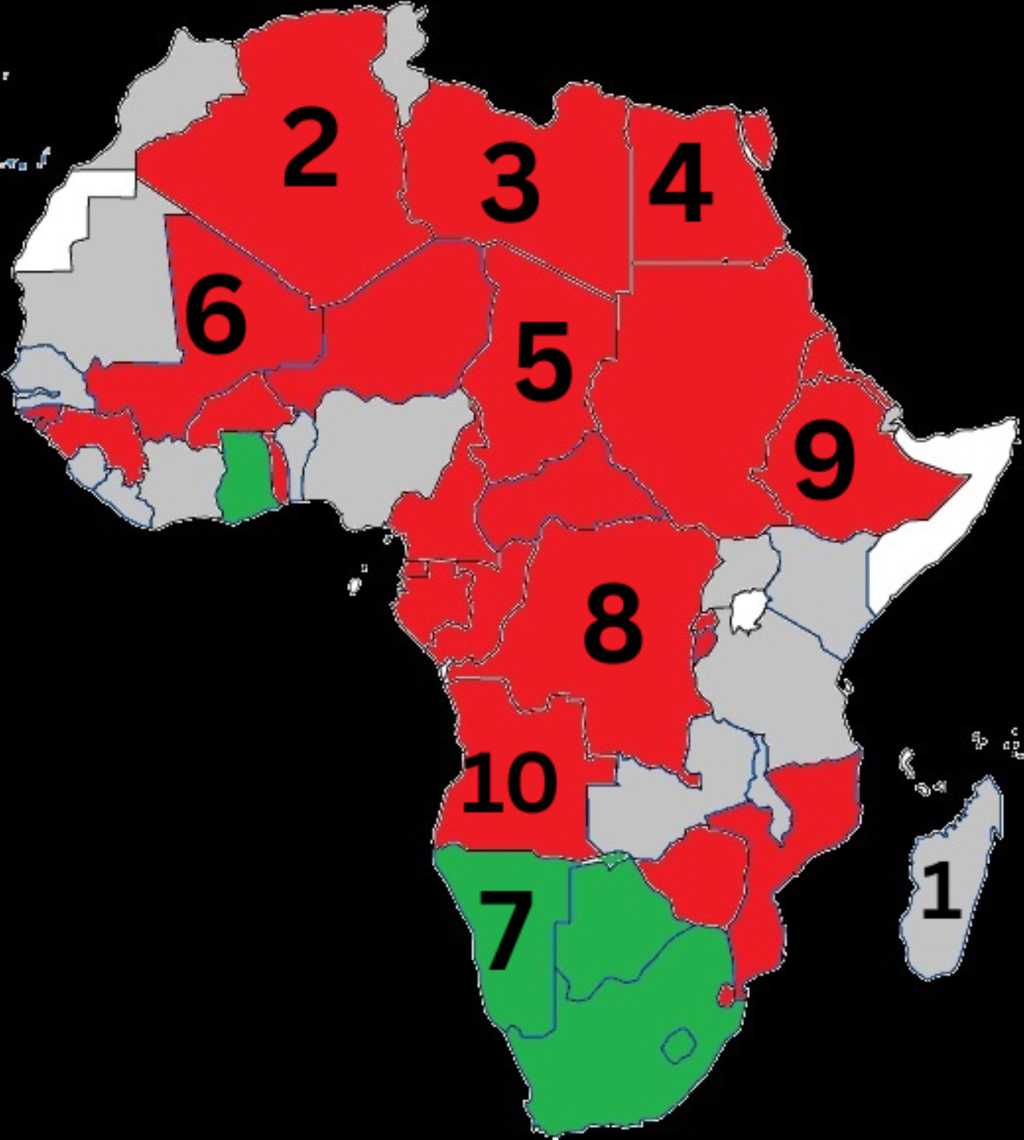
Identify African Countries Trivia Quiz
The map shows ten places in Africa; can you work out what number corresponds to the country?
A label quiz
by Lord_Digby.
Estimated time: 3 mins.
- Home
- »
- Quizzes
- »
- Geography Trivia
- »
- Africa


| 1. |
| 2. |
| 3. |
| 4. |
| 5. |
| 6. |
| 7. |
| 8. |
| 9. |
| 10. |